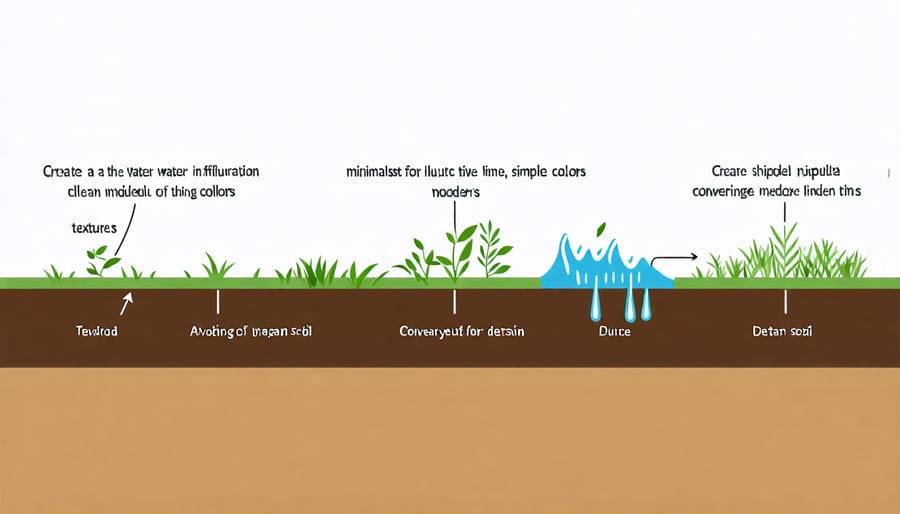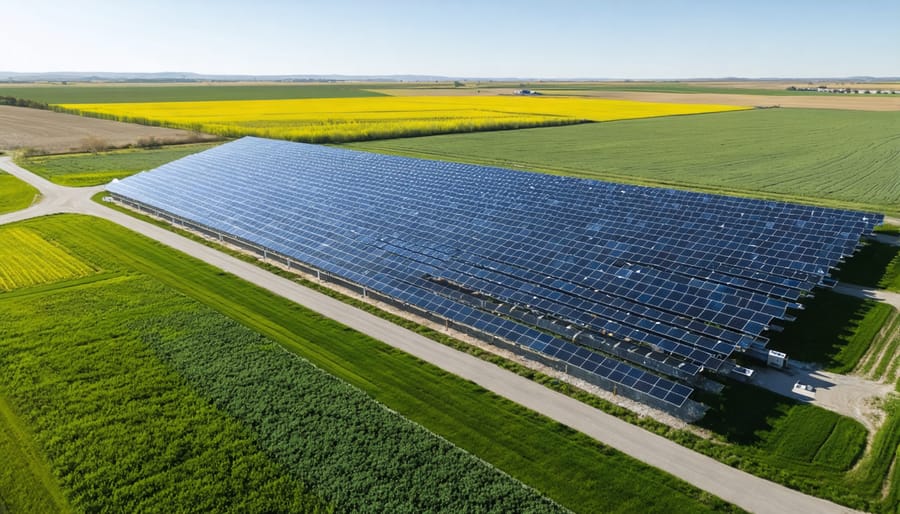Enhance water infiltration on your farm by optimizing soil structure through regular soil testing and amendment with organic matter, such as compost or well-aged manure. Utilize cover crops like clover or rye to improve soil permeability and retain moisture, thus bolstering root development. Implement conservation tillage techniques to minimize soil disruption, preserving organic layers that facilitate water entry. Construct contour swales or trenches on sloped lands to divert rainwater effectively into the ground, reducing runoff and erosion. Engage with local agricultural experts, as their insights can guide personalized infiltration strategies that align with Alberta’s unique climatic conditions.
Understanding Infiltration: The Basics
What is Infiltration?
Infiltration refers to the process where water on the ground surface enters the soil, playing a crucial role in the water cycle. This natural phenomenon influences how effectively water moves into plant roots, replenishes groundwater supplies, and reduces surface runoff that can lead to erosion. For Canadian farmers, particularly in Alberta, understanding water infiltration is essential for managing crops sustainably and efficiently. Healthy infiltration rates can significantly impact crop yields, as they ensure that plants receive the necessary moisture without leading to waterlogged fields.
Effective water infiltration also helps maintain soil structure and fertility. Techniques such as crop rotation, cover cropping, and reduced tillage can enhance infiltration rates by improving soil organic matter and structure, supporting water conservation efforts. Expert insights suggest that by improving infiltration, farmers not only boost agricultural productivity but also contribute to sustainable water management practices in their communities. Thus, infiltration isn’t just a scientific concept; it’s a pivotal part of sustainable farming that empowers communities, strengthens crops, and conserves precious water resources.

Factors Influencing Infiltration
Infiltration, the process by which water soaks into the soil, is influenced by several factors crucial to Canadian farmers, especially in Alberta. Soil type is key; sandy soils, for instance, permit rapid infiltration, whereas clay-rich soils slow it down. Vegetation cover also plays a significant role, as plants and their roots help maintain soil structure and permeability, enhancing water absorption. Topography, or the landscape’s slope, affects how quickly water can enter the ground. Gentle slopes promote infiltration, while steep inclines may lead to runoff, reducing water availability for crops. By understanding these factors, farmers can implement effective practices to optimize water use in sustainable agriculture.
Infiltration and Its Impact on Agriculture
Water Management and Conservation
Infiltration is a crucial process in the water cycle that plays a significant role in water management and conservation, especially important for farmers in regions such as Alberta. By allowing water to seep into the ground, infiltration helps replenish groundwater reserves, supporting an abundant and reliable source of water for agricultural needs. For Alberta farmers, managing water efficiently is vital due to varying precipitation patterns and often limited water resources.
Incorporating infiltration-friendly practices can enhance sustainability and crop resilience. Techniques such as no-till farming, cover cropping, and maintaining soil organic matter improve soil structure and increase infiltration rates. These methods not only ensure effective water management but also promote soil health, reducing erosion and maintaining fertility. By optimizing infiltration, farmers can make better use of available rainfall, reducing dependency on external water sources and minimizing irrigation costs.
Expert insights from Canadian agricultural professionals highlight successful case studies where improved infiltration has led to more consistent water availability and increased crop yields. Embracing these strategies fosters community resilience and encourages a collaborative approach to sustainable farming. By focusing on infiltration, farmers are empowered to manage water resources wisely, align with environmental stewardship goals, and ensure long-term agricultural productivity in Alberta’s unique landscape.

Enhancing Soil Health
Infiltration is a vital process in the water cycle, directly contributing to the improvement of soil health. When water seeps into the ground, it helps develop a robust soil structure by breaking down compacted layers and enhancing porosity. This improved soil structure allows roots to grow deeper and access essential nutrients and moisture, thus bolstering plant vitality and productivity. Moreover, increased infiltration encourages the presence of beneficial microorganisms and organic matter, which are crucial for fertile soil.
For farmers in Alberta, understanding the benefits of infiltration can lead to the adoption of practices like cover cropping and reduced tillage, which further promote soil structure and fertility. With these strategies, soils become more adept at retaining moisture and nutrients, enabling crops to withstand dry spells or irregular rainfall patterns—a common challenge in the region.
Adopting methods that enhance infiltration not only supports stronger plant growth but also mitigates the impacts of climate variability by increasing soil resilience. This holistic approach to managing water and soil resources can lead to sustainable farming that benefits the entire community. For more on how to nurture and sustain soil’s vitality year-round, explore resources like the Organic Agriculture Centre’s piece on soil health. By prioritizing these practices, Canadian farmers can ensure their lands remain rich and productive for generations to come.
Practical Strategies for Improving Infiltration in Your Farm
Soil Amendments and Cover Crops
To improve infiltration in the water cycle, harnessing the power of soil amendments and cover crops is essential for Canadian farmers, particularly in the variable climates of Alberta. Soil amendments such as compost, gypsum, and well-rotted manure enhance the soil structure, increasing its ability to retain and filter water effectively. These materials break down dense clay soils and fortify sandy soils, fostering a balance that promotes infiltration. On the other hand, planting cover crops like clover or rye provides protective ground cover, reducing soil erosion and compaction.
Consider the successful example of an Alberta farmer who implemented a combination of clover cover crops and regular applications of local compost. The results were improved water absorption and healthier crop yields. These practices not only conserve water but also enrich the soil with organic matter, creating a sustainable cycle that benefits both the land and the environment. By adopting these strategies, farmers can enhance infiltration rates, leading to healthier crops and a more resilient agricultural system.
Adopting No-Till and Reduced-Till Practices
Embracing no-till and reduced-till practices offers numerous benefits for Canadian farmers, particularly in regions like Alberta, where topsoil conservation and moisture retention are vital. By minimizing soil disturbance, these practices enhance water infiltration, allowing more efficient absorption of rainwater into the soil profile. As infiltration improves, it boosts soil health, fostering microbial activity and increasing the soil’s capacity to retain water. This becomes especially crucial during dry spells, ensuring crops receive sustained hydration.
No-till farming also mitigates erosion, preserving topsoil and reducing the runoff that often carries nutrients away from fields. This not only maintains soil fertility but also contributes to cleaner waterways by preventing sediment deposition. Farmers utilizing these methods often report reduced operational costs due to fewer field passes, alongside long-term soil health benefits. As part of a sustainable strategy, adopting these practices can lead to more resilient agriculture, aligning with community goals of environmental stewardship and economic viability.

Case Studies: Infiltration Success Stories from Alberta
In Alberta’s vibrant agricultural landscape, the concept of infiltration has become a critical tool for enhancing soil health and productivity. Across the province, several farms have experienced transformative changes through innovative approaches to enhance water infiltration in their fields. For instance, one family-owned farm in Southern Alberta turned to cover cropping and no-till practices to combat soil erosion and increase organic matter. By keeping the soil covered and minimizing disturbance, they’ve observed a significant improvement in soil structure, which has not only enhanced infiltration but also increased crop yields.
Another inspiring example comes from a mixed-use farm near Edmonton that embraced a holistic approach focusing on soil biodiversity. By introducing rotational grazing combined with diverse crop rotations, they’ve successfully deepened the root systems on their land. This strategy has enabled better water retention and increased resilience during dry spells, resulting in more consistent harvests.
Local experts agree on the benefits of these techniques. Agricultural consultants in the region emphasize that improved infiltration can mitigate the impacts of both drought and heavy rains, providing a crucial buffer against the elements. They point out that healthy soil acts like a sponge, and Alberta’s farmers are leading the way in showcasing how sustainable practices can yield tangible benefits.
These success stories highlight the pioneering spirit of Alberta’s farmers and underscore the importance of community in sharing knowledge and experiences. As more producers implement these strategies, the entire region stands to gain, creating a sustainable agricultural future that benefits both the environment and the economy.
Expert Insights: Infiltration Challenges and Opportunities
Agricultural experts emphasize that understanding and improving soil infiltration is crucial for sustainable farming, especially given Alberta’s diverse climate challenges. Future challenges include the need for innovating water management practices to counter unpredictable weather patterns. However, there are significant opportunities as well. Enhancing infiltration rates can lead to improved soil quality, reduced water runoff, and better crop yields, contributing to long-term sustainability. Experts advocate for practical strategies such as cover cropping and reduced tillage, which have shown promising results in Canadian case studies. Collaborative efforts within the farming community can drive the adoption of these practices, ensuring resilient agricultural ecosystems.
Conclusion
In conclusion, understanding and enhancing infiltration in the water cycle is a vital component of sustainable agriculture, particularly for farmers in Alberta and other parts of Canada. The practices discussed in this article—such as the use of cover crops, minimal tillage, and the establishment of riparian buffers—serve as practical strategies to boost water infiltration and foster healthier soils. These practices not only improve water retention and reduce erosion but also help in mitigating the impacts of extreme weather conditions. By adopting these methods, Canadian farmers can play a significant role in the global movement towards sustainable agriculture while benefiting their own farms through increased productivity and resilience.
Participation in local initiatives and collaboration with agricultural experts are equally important. Engaging with community projects or government-sponsored programs can offer additional insights and support, facilitating the transition to sustainable practices. By working together, the farming community strengthens its capacity for innovation and problem-solving, crucial for overcoming contemporary agricultural challenges.
Farmers are encouraged to consider these recommendations seriously and begin integrating them into their operations. The path to sustainability is a shared journey; each step towards effective water management contributes to a more sustainable and prosperous future for all involved in agriculture.











